Influenza vaccination stimulates maturation of the human T follicular helper cell response
- PMID: 39164477
- PMCID: PMC11362011
- DOI: 10.1038/s41590-024-01926-6
Influenza vaccination stimulates maturation of the human T follicular helper cell response
Abstract
The differentiation and specificity of human CD4+ T follicular helper cells (TFH cells) after influenza vaccination have been poorly defined. Here we profiled blood and draining lymph node (LN) samples from human volunteers for over 2 years after two influenza vaccines were administered 1 year apart to define the evolution of the CD4+ TFH cell response. The first vaccination induced an increase in the frequency of circulating TFH (cTFH) and LN TFH cells at week 1 postvaccination. This increase was transient for cTFH cells, whereas the LN TFH cells further expanded during week 2 and remained elevated in frequency for at least 3 months. We observed several distinct subsets of TFH cells in the LN, including pre-TFH cells, memory TFH cells, germinal center (GC) TFH cells and interleukin-10+ TFH cell subsets beginning at baseline and at all time points postvaccination. The shift toward a GC TFH cell phenotype occurred with faster kinetics after the second vaccine compared to the first vaccine. We identified several influenza-specific TFH cell clonal lineages, including multiple responses targeting internal influenza virus proteins, and found that each TFH cell state was attainable within a clonal lineage. Thus, human TFH cells form a durable and dynamic multitissue network.
© 2024. The Author(s).
Conflict of interest statement
A.H.E. is a consultant for InBios and Fimbrion Therapeutics. The Ellebedy Laboratory received funding under sponsored research agreements from Emergent BioSolutions. P.G.T. has consulted and/or received honoraria and travel support from Pfizer, Merck, Illumina, Johnson and Johnson and 10x Genomics, and serves on the Scientific Advisory Board of Immunoscape, Shennon Bio and Cytoagents. The authors have applied for patents covering some aspects of these studies. All other authors declare no competing interests.
Figures
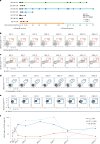

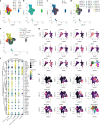



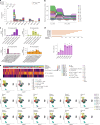


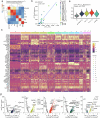

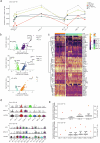
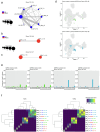
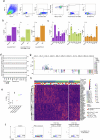
Update of
-
Spatiotemporal development of the human T follicular helper cell response to Influenza vaccination.bioRxiv [Preprint]. 2023 Aug 31:2023.08.29.555186. doi: 10.1101/2023.08.29.555186. bioRxiv. 2023. Update in: Nat Immunol. 2024 Sep;25(9):1742-1753. doi: 10.1038/s41590-024-01926-6. PMID: 37693531 Free PMC article. Updated. Preprint.
References
MeSH terms
Substances
Grants and funding
- F32 AI157296/AI/NIAID NIH HHS/United States
- R21 AI139813/AI/NIAID NIH HHS/United States
- U01 AI150747/AI/NIAID NIH HHS/United States
- HHSN272201400006C/AI/NIAID NIH HHS/United States
- 75N93021C00016/AI/NIAID NIH HHS/United States
- F32AI157296/U.S. Department of Health & Human Services | NIH | National Institute of Allergy and Infectious Diseases (NIAID)
- U01 AI144616/AI/NIAID NIH HHS/United States
- U01AI144616/U.S. Department of Health & Human Services | NIH | National Institute of Allergy and Infectious Diseases (NIAID)
- R01 AI136514/AI/NIAID NIH HHS/United States
- 75N93019C00052/AI/NIAID NIH HHS/United States
- U01 AI141990/AI/NIAID NIH HHS/United States
- R01AI136514/U.S. Department of Health & Human Services | NIH | National Institute of Allergy and Infectious Diseases (NIAID)
LinkOut - more resources
Full Text Sources
Medical
Research Materials
Miscellaneous

